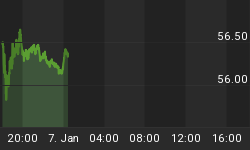As most market followers are aware, investors are overly enthusiastic regarding the prospects for equities in the coming year. Extremes in investor sentiment are being touted by some as a bearish sign that is a precursor to market correction. On the other hand, those of a bullish persuasion tend to rationalize this important data point by nervously resorting to such sayings as "stocks climb a wall of worry" or "markets can stay irrational longer than you can stay solvent" or the "trend is your friend". So are the bulls or the bears right?
Well as it turns out, neither are right. Investor sentiment is not a holy grail, and just because investors are bullish doesn't mean that the market has to correct. In fact, there have been times when more bulls actually leads to a bull market, but this is the exception rather than the rule. As for now, investors are extremely bullish and this has to be interpreted as a bear signal. Why? Because 80% of the time, prices will mean revert, and the next best time to buy will come when investors turn bearish on equities (i.e., a bull signal). It is the rare (but noteworthy) occurrence - think of the 1995, 1998/99, 2003 and 2009 bull runs - for the markets just to power higher despite the extremes in bullish sentiment.
What may seem confusing really isn't. As a tool to gauge the potential of future price action, investor sentiment is head and shoulders above most data points or indicators. It is just a matter of how you use it. The best thing I can say about investor sentiment is that identifies extremes, and it is in these extremes that something is suppose to happen. What is that something? Either the market mean reverts (which it does about 80% of the time with reasonable and tolerable drawdown or expectation) or prices do not mean revert and a new trend starts. This would be a failed signal, and failed signals lead to new and significant trends.
The bottom line: currently investor sentiment is extreme, and as prices really haven't gone anywhere for 3 weeks or so on the major market indices, I would not call this a failure of sentiment yet.
The "Dumb Money" indicator (see figure 1) looks for extremes in the data from 4 different groups of investors who historically have been wrong on the market: 1) Investors Intelligence; 2) Market Vane; 3) American Association of Individual Investors; and 4) the put call ratio. The "Dumb Money" indicator is very bullish to an extreme degree, and this is a bearish signal.
Figure 1. "Dumb Money"/ weekly
Figure 2 is a weekly chart of the SP500 with the InsiderScore "entire market" value in the lower panel. From the InsiderScore weekly report: "Sellers maintained a numerical edge over buyers for seventeenth straight week, but volume was limited due to the holiday and the closure of trading windows at many companies."
Figure 2. InsiderScore "Entire Market" Value/ weekly
Figure 3 is a weekly chart of the SP500. The indicator in the lower panel measures all the assets in the Rydex bullish oriented equity funds divided by the sum of assets in the bullish oriented equity funds plus the assets in the bearish oriented equity funds. When the indicator is green, the value is low and there is fear in the market; this is where market bottoms are forged. When the indicator is red, there is complacency in the market. There are too many bulls and this is when market advances stall.
Currently, the value of the indicator is 68.21%, and this is the highest value in 10 years of data. Values less than 50% are associated with market bottoms. Values greater than 58% are associated with market tops.
Figure 3. Rydex Total Bull v. Total Bear/ weekly
Improve your market timing with Premium Content from TheTechnicalTake.
The Premium Content service is the best $104 you will ever spend on market research. The daily report is meant to keep you on the right side of the market and improve your market timing. That's 40 cents a day!
Even in this confusing market environment, The Premium Content service has been useful in identifying trading opportunities. The indicators have functioned as expected!!!
To learn more about this service click here: Premium Content















